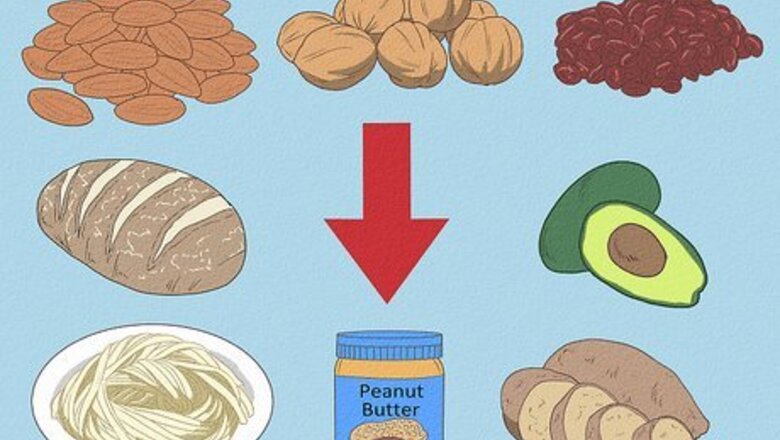
views
X
Trustworthy Source
Harvard Medical School
Harvard Medical School's Educational Site for the Public
Go to source
The best way to lose weight in a month is to eat healthy, balanced meals, safely reduce the number of calories you’re eating, and do exercises that burn calories and tone your muscles, and we’ll show you how! This article will walk you through everything you need to know to get started on your weight-loss journey so you can start taking steps to reach your goal.
Eating Right
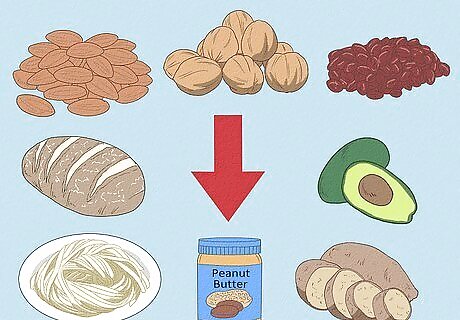
Lower the number of calories you consume. Make an effort to eat less than you’re currently eating. Reduce your daily calorie intake gradually for the first week or so, then stick with an approximate amount that will allow you to lose weight without leaving you feeling totally wiped out. Counting calories isn’t a lot of fun, and it definitely requires discipline in the long run, but it’s a surefire way to achieve a leaner physique. The most elementary rule of dieting is that if you burn more calories than you consume, you’ll lose weight. Consult with a nutritionist, keep a food journal or use a calorie-counting app like MyFitnessPal to track the nutritional value of the food you eat and calculate how many calories you need to keep making progress.
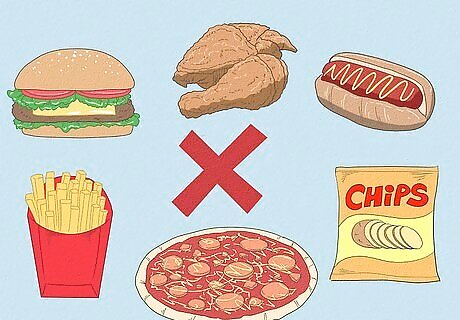
Cut out junk food. In order to keep your calorie intake low, the first things you should eliminate from your diet are salty, sugary, overly-processed foods and snacks. Say goodbye to French fries, pizza, cake and candy. Sweets and fatty foods contain more concentrated doses of calories per serving size, which means you can eat them in the same portions as other healthier foods and still gain weight. Junk food is a death trap for those seeking to lower their body fat percentage. The food you eat should be grilled, baked, broiled or steamed. Stay away from fatty additives like butter and oil. One simple way to drastically reduce the number of calories you’re getting is to stop eating fast food and drinking soda. This allows most people to lose an additional 2-3 pounds a week.
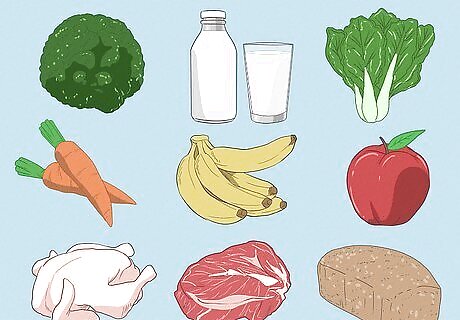
Pile on the good stuff. Low-calorie, filling food are key to your success. 400 calories of vegetables will fill you to the brim while 400 calories of oil or fried chicken will leave you wanting more. Know what to eat to trick your body into telling you it's finished. Fruits, vegetables, whole grains, low-fat dairy and lean meats are all low-calorie dense foods that will help you lose weight. Fruits and veggies are mostly water-based and contain very few calories and very little fat--on the other hand, 1 g of fat is nine calories in itself. So stay away from processed goods and go green. And red, orange, blue, and yellow. Fiber is great for you, too, and only has 1.5-2.5 calories per gram. Most legumes, nuts, and seeds are excellent sources of this.

Avoid adding extra calories while preparing your food. 4 oz of lean chicken is good for you...until you slather it with butter and Colby-Jack. When preparing meat, take the skin off and trim the fat. And don't coat it in bread crumbs or other unnecessary additives. Don’t deep fry any food. Even if it's a vegetable; it loses its nutritional value when fried. Steam your food instead and add lots of spice. Steaming your food instead of frying it will cut down on fat and calories, and spices will spike your metabolism.
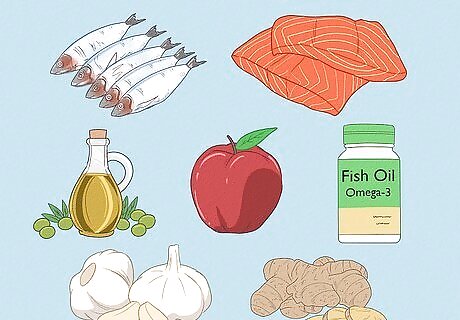
Eat fat-burning foods. Starving yourself is not the key to losing fat -- it's choosing the right foods that will burn the fat for you. Throw out the junk in your pantry and stock up on the good stuff: Fatty fish high in omega-3s help reduce the levels of leptin in your body. And that guy keeps hunger at bay and ups your metabolism. If you're not a seafood fan, talk to your doctor about taking fish oil supplements. Not as good as the natural thing, but still beneficial. An apple a day keeps the fat at bay. Apples are full of pectin, which reduces the amount of fat your body absorbs. They're also fiber-full and calorie-low, so they're really the perfect snack. Did we mention delicious? Add ginger and garlic to your meals. Ginger widens your blood vessels, garlic lowers your insulin levels, and both increase your metabolic rate. Use olive oil as your primary cooking oil. Even though oil is fat, olive oil is full of the good kind (monounsaturated) that helps lower cholesterol levels, and has many other health benefits, too.
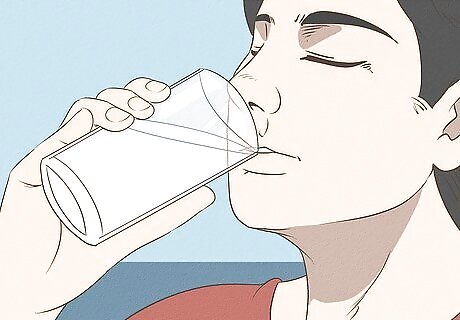
Drink away the weight. Water is the breath of life and of weight loss. Minimize your appetite (and clear your skin!) by drinking morning, noon, and night. Drink two glasses of water before every meal. You will feel fuller faster (say that three times fast) and not have room for more calories. While each person's hydration needs are different, the Institute of Medicine advises that men and women try to consume about 3.7 and 2.7 liters of water a day, respectively, including water found in food and other beverages.. Green tea is a good idea, too. It's loaded with antioxidants and may help increase your metabolic rate. Whatever you do, cut out the sodas and alcohol. They're just empty calories that pack on the pounds silently without even making you feel full.
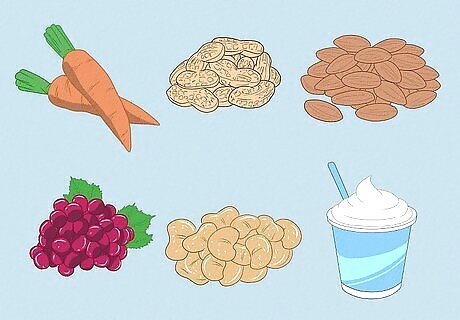
Snack away. Eating 5 to 7 small meals a day leads to quicker weight loss than any other meal routine. You will feel fuller all day, removing the urge to overeat. Keep your snacks healthy. Measure out portions of your favorite healthy snacks (carrots, grapes, nuts, or yogurt) and package them for easy access throughout the week. Instead of working all day, you'll be working and snacking, keeping your metabolism up. Don't skip breakfast! Your body needs that kick in the morning to get reminded to get going. Not only will you be more likely to lose weight, you'll probably keep it off too.
Exercising
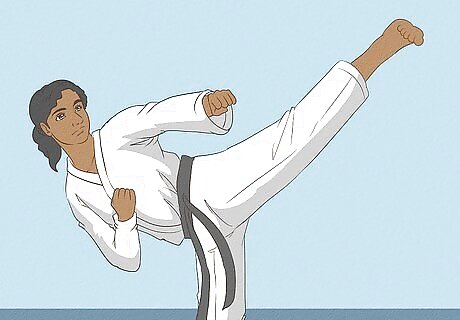
Start the cardio. The quickest way to burn fat and, in turn, burn calories is cardio. No ifs, ands, or buts about it. Luckily, cardio comes in a number of forms. Running, biking, swimming, boxing, tennis, dancing, and myriad other activities count as cardio. So if your knees aren't too thrilled about pounding the pavement, turn to other options. Running, tae kwon do, aerobics, and rope jumping are some of the highest calorie-burning activities out there. Look into high-intensity-interval-training. The Journal of Physiology released a new study that stated "HIT means doing a number of short bursts of intense exercise with short recovery breaks in between. The authors have already shown with young healthy college students that this produces the same physical benefits as conventional long duration endurance training despite taking much less time (and amazingly, actually doing less exercise!)" Not only will you burn more calories, but you'll do it in a shorter amount of time.

Begin weight-training. Cardio is great, yes. You definitely need it to lose weight. However, in order to get the best results, you need to do cardio and weight-train. Cardio can be done every day while weight-training cannot. Your muscles need time to heal. Aim for a cardio workout as often as possible, but limit your weight-training to a few times per week.
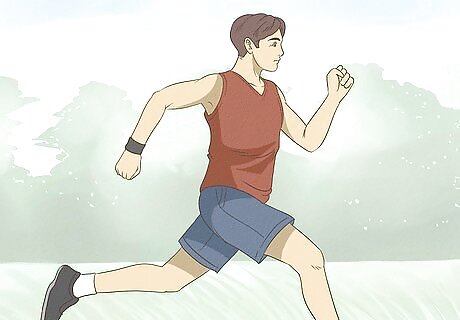
Exercise more often. Nothing burns calories faster than brisk exercise. If you’re not already working out at least 3-4 times a week, get started. Your training sessions should be around an hour each and should balance cardiovascular activity with strength and conditioning. Get your heart rate up and your muscles burning. The more you move, you the more you’ll lose, period. Take a couple days off to rest throughout the week. You’ll be in a reduced calorie state, so your recovery time will be even more important than usual. You’re much more likely to exercise consistently if you can make things fun for yourself. If you’re not the treadmill type, try yoga, swimming, kickboxing, mountain biking, climbing or CrossFit. Anything that keeps you active will benefit your weight loss efforts.
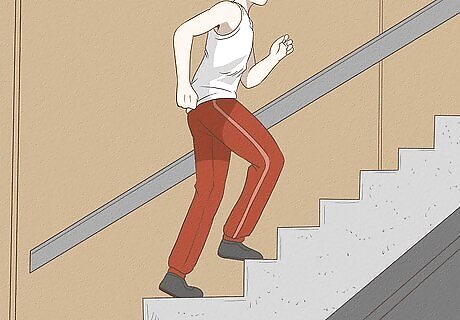
Be realistic about exercise. If you are rather out of shape (by your own doing or because of a physical problem), you may think that you can't work out. But you can -- you'll just have to work out for longer periods of time. Whether it's low intensity or high, it's still calorie burning and muscle strengthening. Even adding short walks, taking the stairs, and washing the car count towards your calorie expenditure. If you can't run a 5k right now, relax. Be a little stricter on your diet and walk that 5k in the morning. Every little bit adds up.
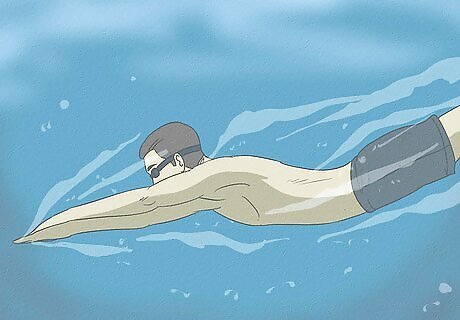
Perform fasted cardio. Fasted cardio involves engaging in some type of cardiovascular exercise, such as jogging, swimming or rowing, while on an empty stomach. The idea is that without glycogen (sugars that enter your bloodstream when you eat) from food, your body will begin drawing on its fat stores to convert to ready-to-use energy. Fasted cardio has been shown to help athletes and dieters burn fat at a much faster rate than traditional forms of exercise. The best time to get in a fasted cardio session is after you first wake up, before you’ve eaten breakfast. Your blood sugar will already be sufficiently low from not having eaten overnight. For fasted workouts, keep the intensity low and the duration short. A 20-30 minute jog at a moderate pace or even a brisk walk will be more than enough to reap the benefits.
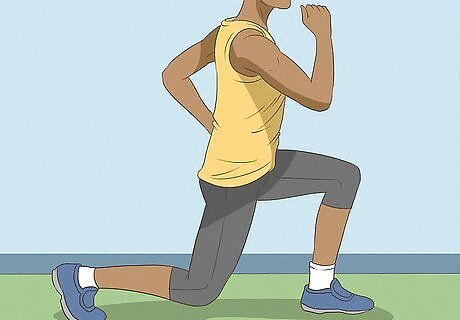
Give Tabatas a shot. Workouts based on the Tabata Protocol, named after the scientist who invented it, are simple yet infinitely challenging: all you have to do is pick a single or compound movement and do it for 20 seconds at a time, with a 10 second rest break in between, for a total of four minutes (8 rounds). Sounds easy, right? Guess again. They’re excruciating and typically leave you heaving in a puddle of your own sweat, but Tabatas are an extremely metabolically-dense method of training, meaning they’ll cause fat to practically melt away. Choose simple movements, like lunges or squat thrusts, that can be repeated multiple times per round. To simplify things when you’re first starting out, only do each round for 10 seconds, with a 20 second rest. Switch to full rounds when you’re ready. Don’t push yourself too hard. Tabatas are one of the most intense forms of exercise there is and should only be attempted by those who are fit enough to handle it.
Reaching Your Goal
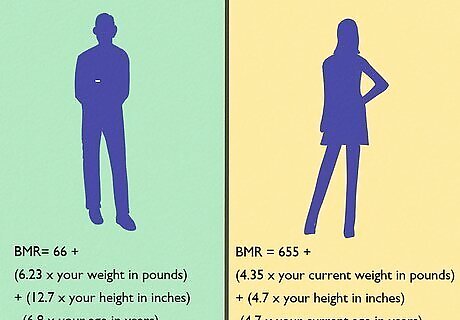
Determine your basic metabolic rate. No matter what you're doing, your body is using energy at a certain rate. The BMR Calculator will calculate your Basal Metabolic Rate (BMR), that is, the number of calories your body burns if you were to do absolutely nothing all day. This will tell you how fast you're burning calories and therefore how much activity you must do and how many calories you need to cut to meet your weight loss goals. And yes, it does take into account your age, gender, and activity level. BMR calculation formula for women: 655 + (4.35 x your current weight in pounds) + (4.7 x your height in inches) minus (4.7 x your current age in years). BMR calculation formula for men: 66 + (6.23 x your weight in pounds) + (12.7 x your height in inches) minus (6.8 x your age in years).
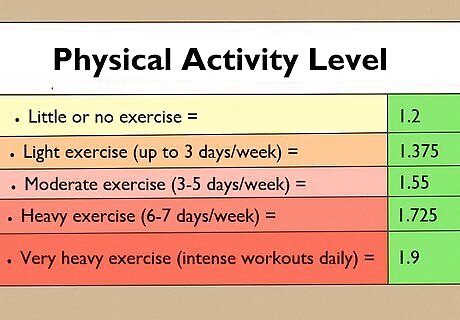
Determine your physical activity level. A number is assigned to each tier of activity. It is taken into consideration when calculating your daily calorie burn. Little or no exercise = 1.2 Light exercise (up to 3 days per week) = 1.375 Moderate exercise (3 to 5 days per week) = 1.55 Heavy exercise (6 to 7 days per week) = 1.725 Very heavy exercise (intense workouts daily) = 1.9
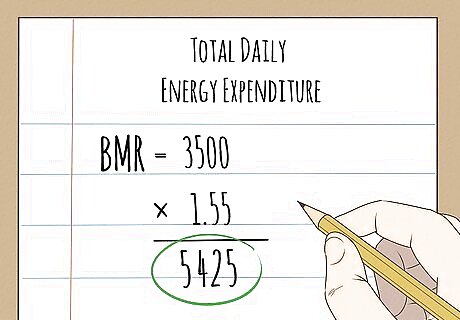
Figure out your needed daily calorie burn. To determine this caloric rate, multiply your BMR x your physical activity rate. This is your Total Daily Energy Expenditure (TDEE). It may seem like a high number; don't forget: You burn calories even while sleeping. For example, if your BMR is 3,500 and you currently get moderate exercise, all you have to do is multiply 3,500 by 1.55 to get 5425 -- aka the number of calories burned to maintain your weight. For a goal of 20 pounds in a single month, you'll have to cut at least 2,000 calories a day using both diet and exercise. A steep goal, indeed.
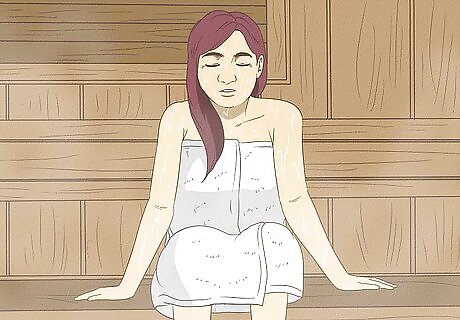
Sweat the pounds away. Since water comprises so much of the human body, our cells have a tendency to stash it away for future use. This can result in bloating and accumulation of water weight, tipping the scale higher and higher. Get rid of excess fluids by releasing water from the body in the form of sweat. An hour of continuous cardiovascular exercise or a twenty minute soak in the sauna can help you dump 1-2 pounds of water weight. Make sure you’re drinking a moderate amount of water to cycle fresh fluids into your system and prevent dehydration. Sweating has long been used by boxers, wrestlers and other combat athletes to make weight at pre-bout weigh-ins.

Get plenty of sleep. In order to improve your overall feeling of wellbeing and run at top capacity, you need to make sure you’re well rested. Aim to get at least six hours of deep, uninterrupted sleep every night, though eight is preferable. While you rest, your body will repair damaged cells and tissues, allocate calories for internal use and restore fallen energy levels. When you wake up, you’ll be recharged and ready to redouble your efforts. Due to overwork, insomnia, stress and other issues, many people don’t get adequate sleep and find it impossible to lose weight as a result. If you can’t find the time to sleep in one long block at night, try taking a couple short naps (10-15 minutes) throughout the day.
















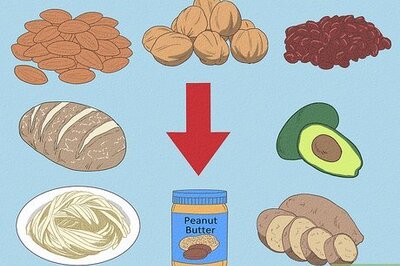
Comments
0 comment